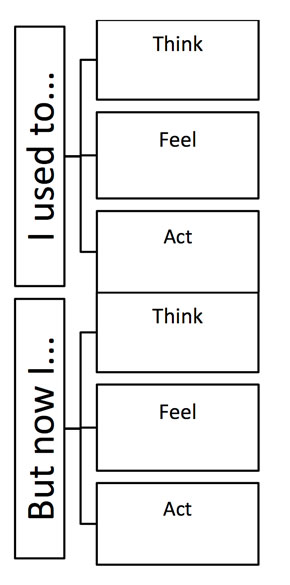
Teach your students how the brain works when it has to make a decision about how to behave. When we understand ourselves better, why we act the way we do, we can actually create plans to behave better. With help from a teacher, understanding of the brain, strategies ready to go, students can make much better choices – even impulsively.
The Biology of Behavior:
Incoming signals from the senses let the amygdala, part of the brain’s limbic system, scan every experience for trouble, pain, fear or even excitement (feelings of all kinds). If there is some sort of trouble, the amygdala reacts instantaneously, telegraphing a message of crisis to all parts of the brain and even body!
 The whole body changes immediately, causing the heart to beat much faster, eyes to dilate, stress hormones to be released quickly and in great amounts, and muscles preparing to move. Simultaneously, the cortical memory systems are quickly retrieving what the brain knows about this “trouble”. Nothing else can be focused on!
The whole body changes immediately, causing the heart to beat much faster, eyes to dilate, stress hormones to be released quickly and in great amounts, and muscles preparing to move. Simultaneously, the cortical memory systems are quickly retrieving what the brain knows about this “trouble”. Nothing else can be focused on!
The rational part of the brain, pre-frontal cortex (PFC), has been hijacked or captured so that it cannot do its work at this time. Eventually, a second signal might make its way to the thinking part of the brain, PFC, which mulls over information through several levels of brain circuits before it fully perceives and responds appropriately.
 LeDoux’s research explains the power of emotions, the faster and shorter route to the amygdala, over rationality, the longer and slower route to the PFC.
LeDoux’s research explains the power of emotions, the faster and shorter route to the amygdala, over rationality, the longer and slower route to the PFC.
With time, maturity, patience and strategies, we can help students (and ourselves) use the PFC during times of impulsivity or amygdala-driven reactions. This is a very short explanation of the process, leaving out many details, but enough to help educators understand what is happening in the brain when extreme emotions are experienced.
Examples:
- Use “Chart Your Changes” graphic organizer to help students process through their amygdala-driven thoughts or their PFC-driven thoughts. Our thoughts are the powerful weapons against conflict, and WE control our thoughts.Create a chart with students that shows the process of their old thoughts turning into amygdala-driven actions (not good). Thoughts turn into feelings that turn into actions. Show students how to chart the positive flow of thoughts right alongside the old way of thinking. You can help them fill in the chart based on something that just happened. (Special thanks to Michael Adams from J. Albert Adams Academy for sharing this idea).
- “Map My Brain” – ask students to draw the route within their brain that thinking took place (on a graphic of the brain of course). Was the route from the brain stem to the amygdala (emotional, impulsive and resulting in bad choices usually) OR was the route from the brain stem to the prefrontal cortex (analyzes information before acting, plans, makes best choice since it’s center for impulse control)?Reinforce to students that every time they make a good choice, think before they act or think about how their behavior will affect others, they are strengthening the neural pathway of the PFC. This helps them make better choices in the future and improves their emotional intelligence. (Special thanks to Michael Adams from J. Albert Adams Academy).
The results of my changes are…




thelovelyregina
I found this article to be very helpful! It makes perfect sense that the Pre-Frontal Cortex (PFC) has taken control over and the students are not able to do their work. The brain is still thinking about what has just happened. When the brain is stuck in the past and the emotions of the past it becomes hard to get back on track and focus on the work that needs to be done. My question is how does a teacher get the student on board with this plan?
Rick Doughty
An effective way of helping students act thoughtfully in spite of their emotional reaction is to have them learn improvisation. Improvisation involves thinking on your feet in a cooperative way in a situation that is usually somewhat stressful. However because it is like a game and often results in funny situations, students can be very motivated to try this. An example of a fun improv exercise I’ve done with kids is “Vacation Slideshow”. The involves one student who is the traveler and is telling about the vacation (the speaker). Behind the speaker are three other students (the drama team) who create a still scene with their bodies (example: looking like they’re having a picture taken with Mickey). The game begins with the kids in the audience suggesting a vacation destination (Disneyland). The speaker begins with a scripted sentence using the audience’s suggestion, “Last week I went to Disneyland and when I got there I saw a…” At this point the speaker pretends to click a PowerPoint remote, turns around, looks at the drama team’s scene and creates an explanation of the scene. The speaker then turns back to the audience and continues the story while the drama team behind creates a new still scene. The vacation story continues in this way. In a fun exercise like this there are at least two opportunities to learn to act thoughtfully in spite of stress: 1) the student is speaking in front of other kids, which most students find stressful, and 2) the student is faced with unknown scenes and must create a story about them on the spot. If a teacher understands the principles of improvisation and steps kids into becoming skilled at improv, this becomes an excellent way to train students to keep their cool and act thoughtfully under pressure. This trains the kids to use their PFC in spite of what their amygdala is motivating them to do in a fun game-like situation.